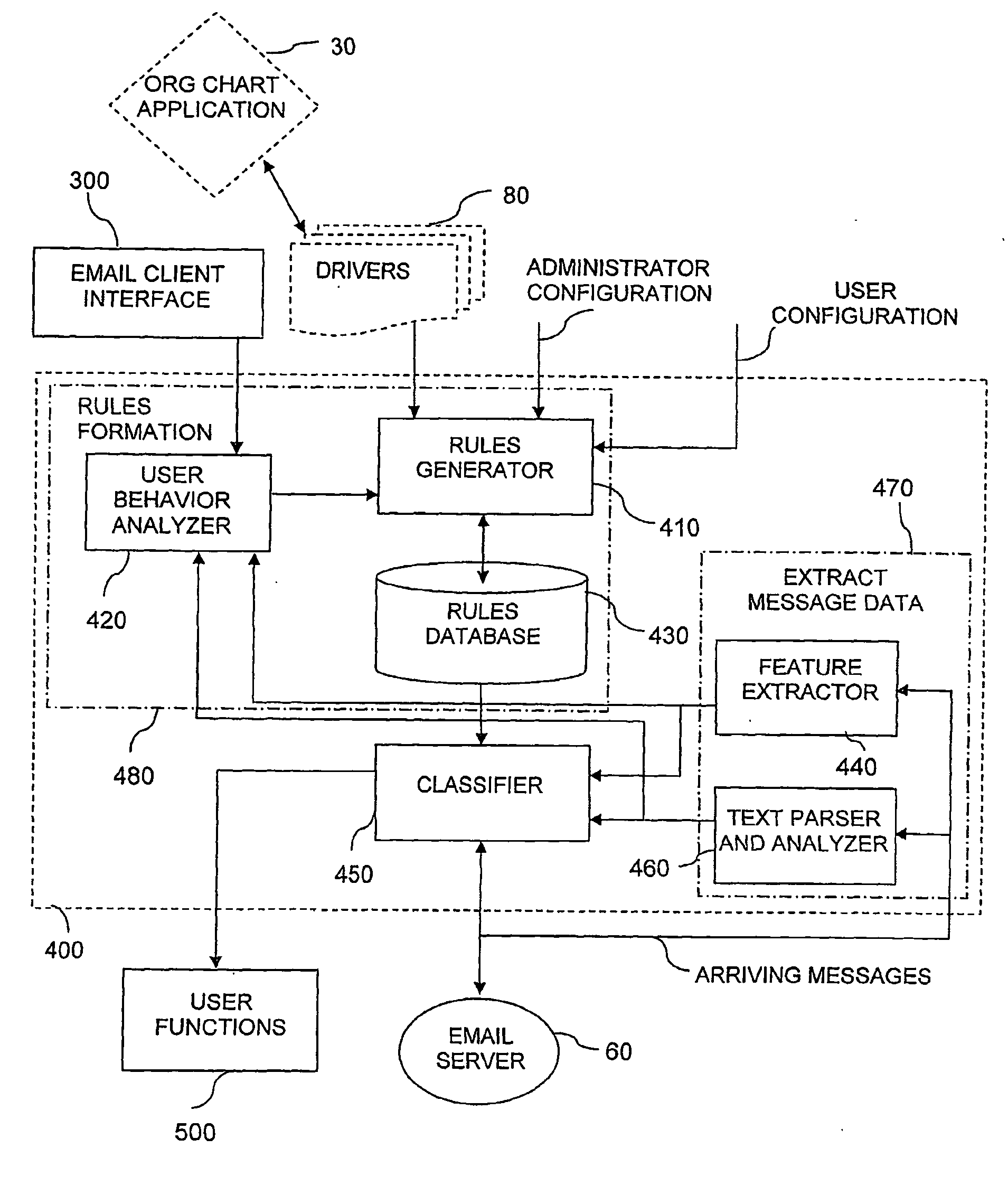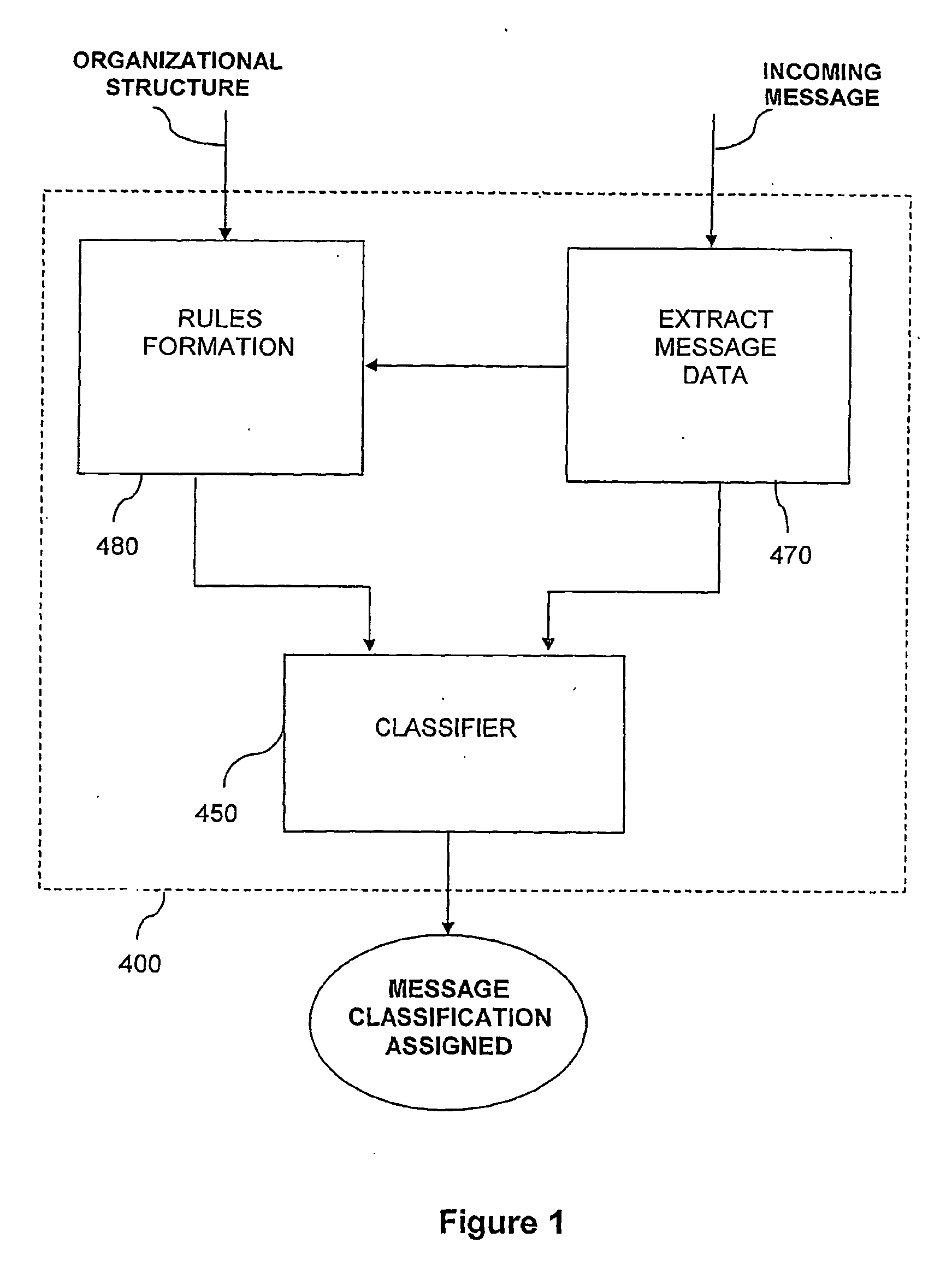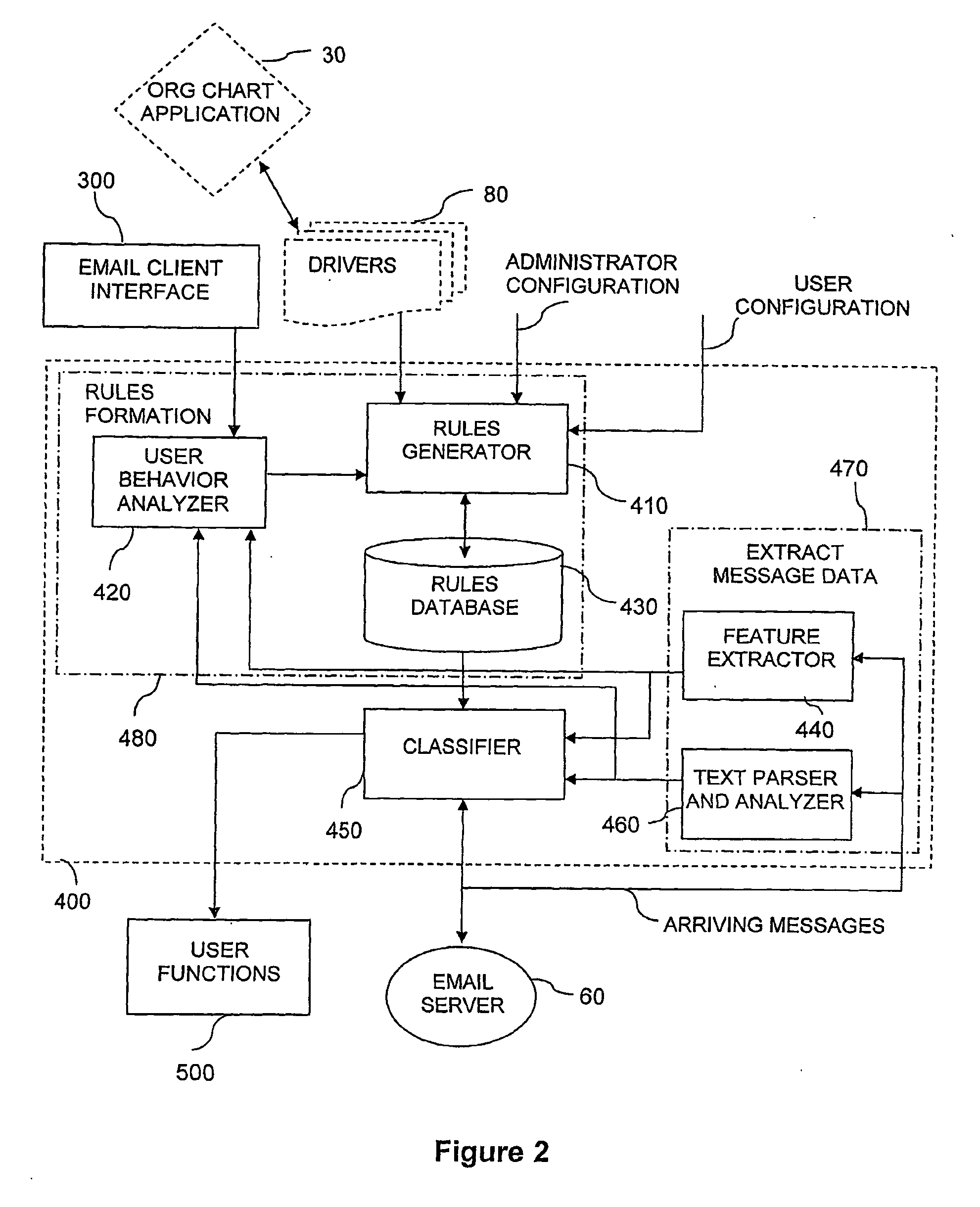Method and devices for prioritizing electronic messages
a technology for electronic messages and prioritization, applied in the direction of transmission, instruments, electric digital data processing, etc., can solve the problems of e-mail traffic load explosion, real threat to the infrastructure and workforce productivity of many organizations, and shortening the time for other, more important tasks
- Summary
- Abstract
- Description
- Claims
- Application Information
AI Technical Summary
Benefits of technology
Problems solved by technology
Method used
Image
Examples
Embodiment Construction
[0055]FIG. 1 illustrates a system (400) according to the invention, also referred to herewith as “classification engine”, for classifying incoming messages. The classification engine (400) includes an extract message data unit (470) for gleaning the information required to establishment of the message's importance class, by means of applying, within the classifier (450), a set of classification rules found in the rules formation unit (480). The rules formation unit (480) is able to maintain a repository of pre-determined classification rules, as well as generating new ones, based upon the information obtained from the extract message data unit (470), and from the organizational structure data, both being transferred to rules formation unit (480), as shown in the drawing. Once the message's importance class is established by the classifier (450), it is then assigned to the message by the classifier (450).
[0056]FIG. 2 describes in detail the classification engine (400) of FIG. 1. The...
PUM
 Login to View More
Login to View More Abstract
Description
Claims
Application Information
 Login to View More
Login to View More - R&D
- Intellectual Property
- Life Sciences
- Materials
- Tech Scout
- Unparalleled Data Quality
- Higher Quality Content
- 60% Fewer Hallucinations
Browse by: Latest US Patents, China's latest patents, Technical Efficacy Thesaurus, Application Domain, Technology Topic, Popular Technical Reports.
© 2025 PatSnap. All rights reserved.Legal|Privacy policy|Modern Slavery Act Transparency Statement|Sitemap|About US| Contact US: help@patsnap.com



